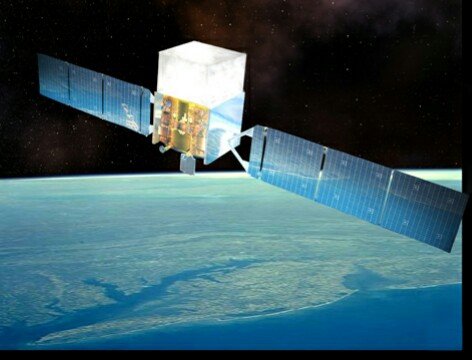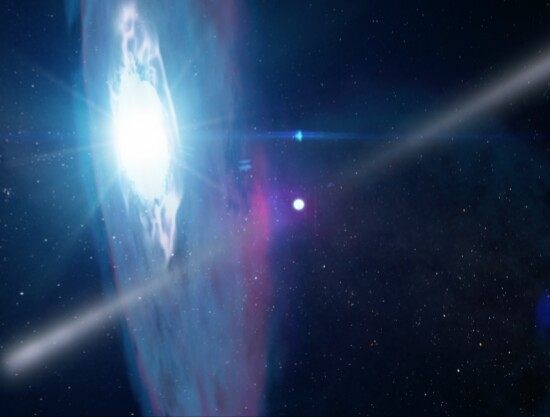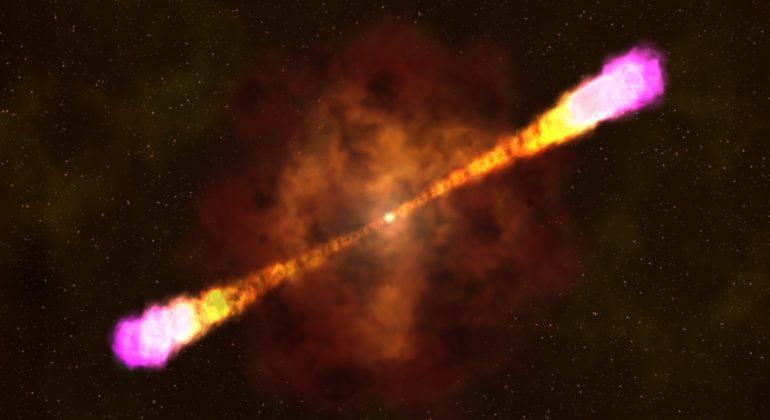[dropcap size=small]Y[/dropcap]ear 2018 will be a paramount for the astronomers when a city-sized neutron star rotating hundreds of times per minute will meet the brightest star in the Milky Way.
The stellar remnant J2302+4127 or J2302, discovered by NASA in year 2009 by its Fermi Gamma-ray space telescope is a crushed core of a huge star which died in a supernova. [highlight ]The pulsar (J2302) has a diameter of just 20 km but has a mass twice of the sun.[/highlight] It rotates at a very high speed of about 7 times per second, thus emitting magnetic radiations which are detectable. Pulsars are usually detected by radio waves but this one was detected by gamma radiations which are the most energetic form of electromagnetic radiations.

Since the discovery of J2302, scientists have noticed some peculiar variations in rotation and rate at which it slows down and this strange behaviour was not seen before in any isolated pulsar. [highlight ]Ultimately, they realised that these peculiarities are caused by motion of this pulsar around another massive star, making this the longest period binary star system containing a radio pulsar.[/highlight]
[highlight ]The second star in this binary system is MT91 213, which is 15 times bigger than sun and is one of the brightest stars in our Milky Way Galaxy.[/highlight]

[highlight ]J2302 revolves around MT91 213 in an orbit of 25 years and gets very close once in every revolution.[/highlight] The pulsar is currently on the near side and is approaching toward the star. In 2018, this closest approach will be different than usual. [highlight ]The pulsar will plunge through the surrounding disk of dust and gases, triggering astrophysical fireworks.[/highlight]
Three years for warning of this crucial celestial event has allowed the astronomers to prepare to study the system across the entire electromagnetic spectrum using their largest telescopes. [highlight ]This cosmic event will help scientists in studying the gravity, stellar winds, magnetic field and disk properties of massive stars.[/highlight]




